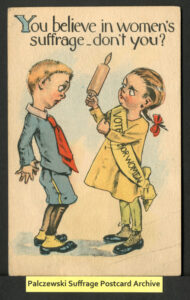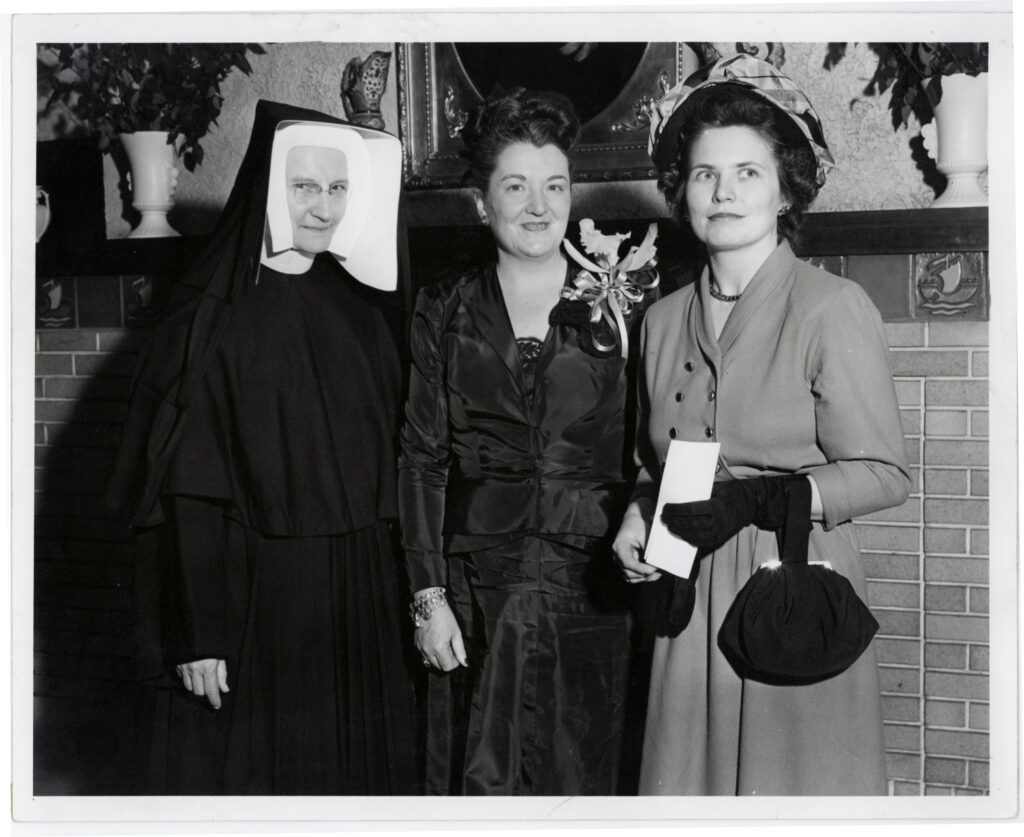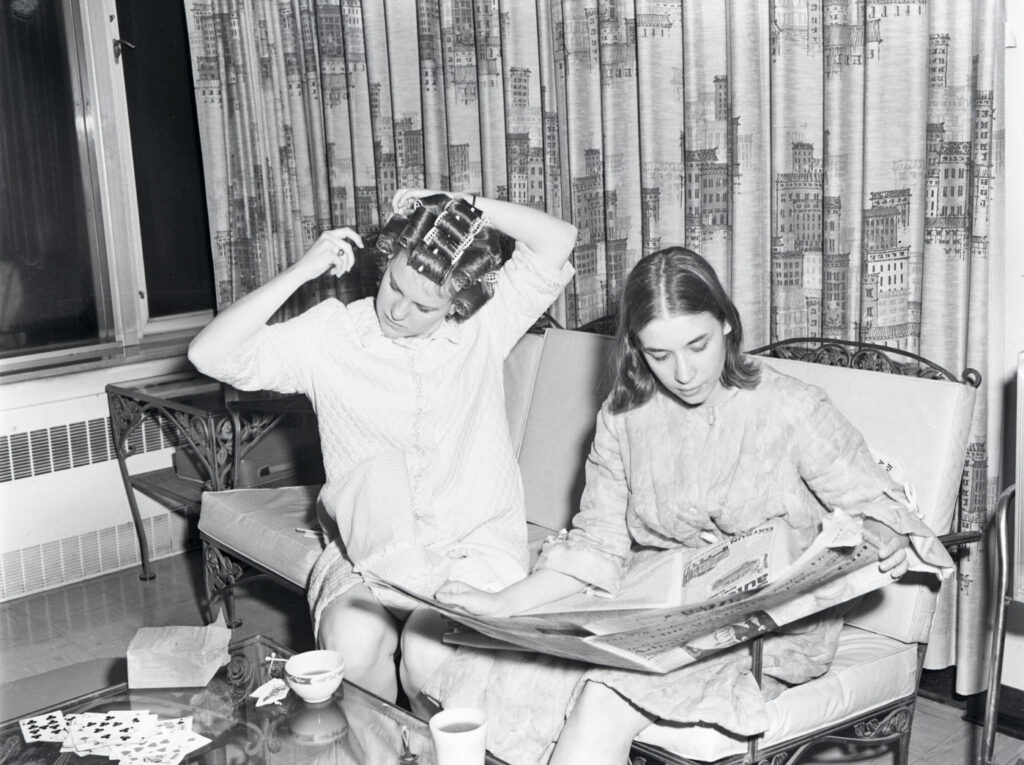During the spring of 2020, I had plans to create an online exhibit exploring the unprocessed Eleanor Foundation collection at the Women and Leadership Archives (WLA). I began research before the pandemic, but interrupted access to physical collections halted the exhibition’s production. Reduced physical staffing for de-densification of campus and prioritization of teaching and research inquires halted the progress of making the publication of the exhibit, but the information gathered from the attempted display deserves light. This blog discusses some aspects of the Eleanor Foundation, working with an unprocessed collection, and future research potential. When I took the photos that appear in this blog, I did not intend to publish them, only to aid me in my research. Due to this, the quality of the images is lower than in other WLA blogs.
Keep on reading!Author Archives: Women and Leadership Archives
Have Your Cake And Ballot Too: Cookbooks in the Fight for Suffrage
Exactly one century ago this year, the United States extended the right to vote to women. To commemorate the centennial of this event, which has helped to shape American politics and society ever since, the WLA has been featuring events, exhibits, activities, and many other ways to learn about the fight for suffrage. One little-known chapter of American suffragist tactics that we’re highlighting is the suffrage cookbook.

Legacy of the 19th Amendment: Homemakers and the Equal Rights Amendment
In 1920, the 19th Amendment granting women the right to vote was ratified by the 34th state and became part of the United States Constitution.[i] Suffragists had won this battle, but the war for equality was far from over. Within a year of winning the right to vote, women’s rights activists found their next battle in the idea for “a federal guarantee that the law would treat people equally regardless of their sex” (Thulin, 2019).[ii] From this idea came the Equal Rights Amendment (ERA). Though it was introduced early on, the ERA did not gain traction until the 1960s-1970s. This last draft of this Amendment is short and simple:
Section 1. Equality of rights under the law shall not be denied or abridged by the United States or by any State on account of sex.
Section 2. The Congress shall have the power to enforce, by appropriate legislation, the provisions of this article.
Section 3. This amendment shall take effect two years after the date of ratification.
The ERA inspired controversy. One group that opposed it, called Stop Taking Our Privileges (STOP) ERA, claimed the ERA took away women’s privileges as homemakers and would rob them of their femininity. To fight this claim, a new group called HERA (Homemakers for the Equal Rights Amendment) was formed.
Keep on reading!From the Mrs Files to the Sister Files
In May, the New York Times began to publish a series called The Mrs. Files, exploring what the honorific Mrs. means to women and their identity. The project took shape when staff began digging through their own archives and digitizing millions of photos (I can’t even imagine!) and found that even history’s most well-known women were categorized under a card holding their husband’s name with the added title “Mrs.”. Artist Frida Kahlo, for instance, was identified as “Mrs.” Diego Rivera in the newspaper’s files.
Learn more about the New York Times Mrs. Files project here and here!
At the WLA, we have come across plenty of examples of women’s names changing in different stages of life. These instances make us stop and think about what these changes meant to these individuals, how we can usefully organize our records, and how to best identify these women to show respect to their full lives and accomplishments.

A WLA Detective Adventure: “Share Your Story: Student Life at Mundelein”
In quarantine these days, I’ve been watching a lot of Murder, She Wrote. While admiring the absolute treasure that is Angela Lansbury as mystery author Jessica Fletcher (talk about a Woman in Leadership!), I’ve come to a conclusion: the past, as we know it today, is a detective story.

A Voice for Themselves: The Lavender Woman and the Lesbian Community in Chicago
When we decided to write a piece in honor of Pride Month, I will confess that I was rather apprehensive as I was not familiar with LGBTQIA+ history and did not want to mis-represent the community unintentionally. However, I also felt that delving into unfamiliar territory and learning more about it was better than remaining in the dark so I decided to do some sleuthing around in the WLA’s holdings to see what I could find.
One Graduate Assistant’s Perspective on Working from Home
Although our physical archives in Piper Hall remain closed due to Illinois’s shelter-at-home order, there is still plenty of work to be done. The week before the issue was ordered, the Women and Leadership Archives began preparations to work remotely. Graduate Assistants working on digitization projects began mass scanning the Mundelein College Photo Collection to create work for them to do remotely. The Director and Assistant Archivist began meeting to discuss what projects could be available for the Assistants. They also contacted researchers to try and find a way to make collections accessible during the closure. And so many more things happened in that week.
What about now?
Keep on reading!Women Worldwide Protecting the Environment
The young environmental activist Greta Thunberg has gotten the world’s attention in the past year for her great passion and bold actions to fight climate change and persuade everyone to do their part. At 16 years old, she was the youngest to be named Time Person of the Year and was included in Forbes list of the World’s 100 Most Powerful Women in 2019. Wow! That’s quite an impact for one young woman to make.
Keep on reading!Nearly Ninety Years of Mundelein College
With the spring semester, my role here at the WLA changed, and I became a Sesquicentennial (150th) Scholar. To mark Loyola’s 150th anniversary, the other Scholars and I have been researching and creating a timeline of 150 years of student life at Loyola and Mundelein College.* What seemed like a straightforward task has had me digging through files of every kind at the WLA in search of a dynamic photo, a newspaper clipping, or a good story from Mundelein’s past students.
Continue readingWhat’s in a name?: Working on the LUCIR photographs
There was something not quite right about the working title for this folder. The first letters of the student organization’s full name, “Latins United for Our Cultural Heritage”, were not lining up with its acronym, LUCIR. This thought continued to bug me as I scanned the folder of pictures, leading me to pursue a fascinating trail through a published book, several other folders in the Women and Leadership Archives’ (WLA) collection and a yearbook.
